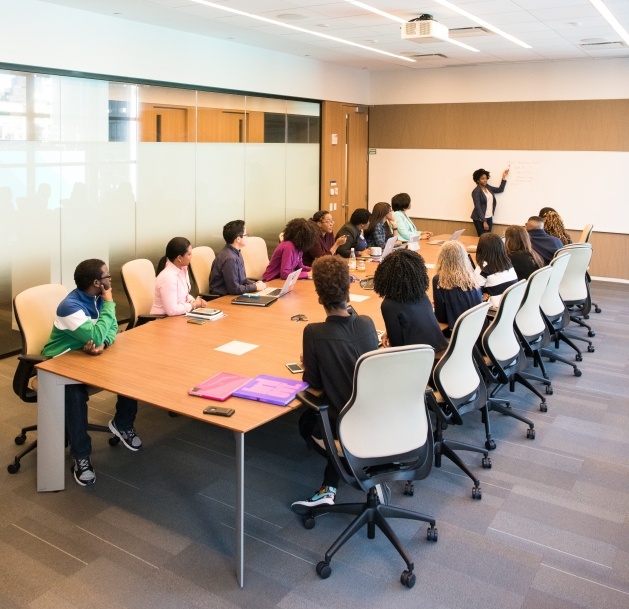Nowadays it is not enough if you are good at something, you must be able to present it flawlessly as well. I was asked several times for job interviews to prepare a presentation as a prework for the interview. However according to some studies a huge percentage of people are actually fear more of public speaking than death. I believe that if you prepare properly and practise, you can be a master of presentations. Some of us feel more natural to be on the stage, others of us spend a lot of time practising to get used to it. But it is a skill which can be developed. You can develop too.
Before going into details, I would like to share with you that I am not the kind of person who was borned to be on the stage. At school I hated oral exams, I always felt more confident during the written tests. But with a lot of practise in AIESEC and Toastmasters, I was able to improve my presentation skills significantly. I became more confident on the stage and developed my own methods for speech writing and preparation. Last year I delivered a speech at TEDxBenedekHegy conference in front of approximately 100 people. Even though I considered myself an experienced speaker, I could still learn new tricks for speech preparation.
There are three basic rules you must follow if you want to prepare properly to a speech:
PRACTISE
PRACTISE
PRACTISE
End of story, good luck!

Photo by freestocks.org from Pexels
I’m glad you are still reading. Actually the secret is really practising, but let’s see how.
1 Get to Know The Circumstances and Your Audience
Whenever you prepare a presentation, remember that it is always about your audience and not about you. Even if you present your own results and successes, the aim of the presentation should be to give something to the audience, not to show off. The best way to satisfy your audience’s needs is to get to know them as much as possible. Ask the organizers what they know about the participants. How old are they? What do they know about your topic? If you have opportunity, talk to the people who will be your audience just before your speech. It will help you also with stage fright. Presenting in front of people who you already know can make you more comfortable on stage.
A lot of my friends came to listen my TEDx speech. Whenever I felt a little bit nervous, I just searched for a familiar face and it passed away immediately.
The circumstances of the presentation are also crucial. How much time will you have? Will there be a possibility to play a video? Will you the opportunity to try your speech at the venue before the audience arrives? The more details you know, the more confident you will present.

Christina Morillo (Pexels)
2 Become An Expert of Your Topic
Even if you are asked to present a topic you do not know very well, you have the possibility to get to know it better before your speech. Use it! Do a little research about the topic, think through the possible questions of audience and what would you answer. Don’t forget that there was a reason why you were chosen to that specific topic, and you will be definitely the expert of your presentation as nobody else knows exactly what you want to say. Your presentation won’t be an acting performance where you need to remember to the exact words. If you don’t learn your speech by heart, it is not a problem. My method is that I try to remember to the main ideas, the key words and sentences. I practise a lot the beginning of the speech because the first impressions are hard to modify and the closing because it is crucial how will the audience remember to my speech.
I got to know during my TEDx preparation the memory hook method thanks to the TEDx preparation. I used it in the following way:
- I highlighted the main ideas of my speech
- I imagined my way from my home to the city center which I have done several times and remember to it easily
- I imagined symbols, pictures for the key parts of my speech and I placed them in my mind on the way I do from home to the city center. I used symbols and pictures which do not belong there. For example I imagined theatrical masks (sad face and happy face) on the road. This meant for me the part about emotions in my speech.
- When I delivered my speech and even during practice, I imagined myself going on that road and seeing the special pictures which do not belong there. This way I could remember to the order of my speech.
3 Prepare First the Speech Later The Visuals
PowerPoint, Prezi, Keynote are great programs to add visuals to your speech, but do not forget that these programs should only help the audience to understand better your speech. Yes, they should help the understanding of the audience, not helping you to remember what you wanted to say. Technical stuff can go wrong easily and if you rely on them too much, you won’t be successful. If you have a clear structure, prepare well to your presentation, you will be able to deliver a perfect speech.
So whenever you need yo do a presentation, think on first the goals of the speech and to the main message. After it prepare the main ideas which will support your message. Only when you are sure about what you want to say, think on the visual aids.
You can read the second part of the article here. Tell me, have you ever tried any of these methods so far? Share your experience in a comment or contact me.
**Cover photo: TEDxBenedekHegy **







Leave a Reply